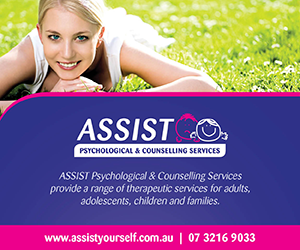Each year 27 per cent of 18 to 25 year olds face a mental health issue. Erin Stewart is encouraged by grassroots action initiated by young people, who, like her, aren’t willing to accept things the way they are.
A new, disturbing Australian Bureau of Statistics (ABS) report has found that suicide is now the leading cause of death in young people between the ages of 15 to 24. While the suicide rate of people from this age group has declined overall, at the moment it is stubbornly plateauing. Suicide persists. It’s a particularly sobering fact to reflect on at the conclusion of 2014’s National Youth Week celebrations.
Aside from this damning figure, mental health has persistently been a major issue for young people. According to headspace, a major mental health service provider designed to serve those under the age of 25, approximately 27 per cent of 18-25 year olds face a mental health issue each year. Significantly, 75 per cent of mental health problems emerge before the age of 25.
In recent years, Australia has seen improved investment in youth mental health. Youth mental health researcher and advocate Professor Patrick McGorry leveraged his 2010 Australian of the Year win to put youth mental health in the public arena. The 2011 federal budget funded a moderate expansion in the number of headspace services in local communities. In contrast, however, the review into mental health promised by Tony Abbott at the 2013 election hasn’t happened to date.
Every April since 2000, National Youth Week is held across the country in order to celebrate young people through a series of community events organised by young people themselves. This year, the fact that mental health issues are a deep concern for young people was not lost on the NSW Mental Health Commission or by the NSW Youth Week Committee. On April 1, the precipice of Youth Week, they held a Youth Mental Health forum on Minding Our Mental Health. I was there.
At the forum, young people who care about and have been touched by the rate of illness amongst their peers represented regions throughout the entire state. Many travelled vast distances to NSW Parliament House, even from as far as Broken Hill, and even more missed a day of university or school to get there. The passion amongst the participants was palpable; they asked bracing questions of representatives of mental health organisations such as Lifeline, headspace, ReachOut, and others.
Overall, there was discontent. In my generation, too many people have lost their lives; too many people have suffered, wounded in silence; too many people face life-long mental illnesses, which, if they were identified early on, could have been prevented. I have seen this personally both as someone with lived experience of mental illness and who has witnessed it in others.
I first showed signs of having bipolar disorder with reoccurring bouts of psychosis at 14 but wasn’t diagnosed until age 23. My symptoms made no sense nor were given any relief until then. I see and feel a thread of grief in my friends who have lost a classmate. Indeed, statistics from the 2013 Obsessive Hope Disorder report into Australia’s ailing mental health system reveal that, on average, in each Year 12 class around the country, at least one student has attempted suicide.
Other generations have faced the same problem. Thankfully, however, the silence and stigma around mental illness has, I believe, decreased over time. Over 120 of us met and talked about mental health candidly – an indication of social change unto itself. The tragedy is that now, young people continue to suffer despite years of psychological and psychiatric research that has unambiguously confirmed that it doesn’t have to be like this. Nobody has to die.
Despite the clear persistence in mental health issues in young people, Australia no longer has a mental health minister in federal politics. Mental health is a collapsed category, lost under the tide of other health concerns.
Mental health is a complex area both to research and to legislate on. But the problems we saw at the forum boiled down to this: people have difficulty assessing the severity of their own and others’ illness, or even whether they have one at all. Part of this is caused by the fog of mental illness often renders reality distant; you ‘lacks insight’, so to speak. It can be caused by a lack of education about how it really feels to live inside the skin of someone with mental illness, and therefore a lack of awareness when those feelings become yours.
The other problem is internalisation of social shame: if you think it’s weak or a cop-out to blame your problems on mental illness, it’s natural to deny its existence. The 2010 National Mental Health Report showed that 65% of those experiencing symptoms do not seek help.
Unchecked mental illness catches up with you in the end. Nine years of untreated mood instability left me suicidal and barely able to leave the house. Sadly, of course, not everyone survives a mental health crisis.
The task of suicide prevention and harm mitigation has fallen, at least in part, to young people themselves – like those in attendance at the Youth Week forum. Clever and friendly, they’re working to bring about their own grassroots change. They’ll speak to their MPs, write letters to their local newspapers, complain to their school principals about the state of mental illness education, hold information nights, and fundraise so they can make their own initiatives for social inclusion.
NSW Mental Health Commissioner John Feneley said to us at the forum, “You don’t have to accept the way things are.” He’s absolutely right.
This article first appeared on ‘ABC’ on 14 April 2014.























